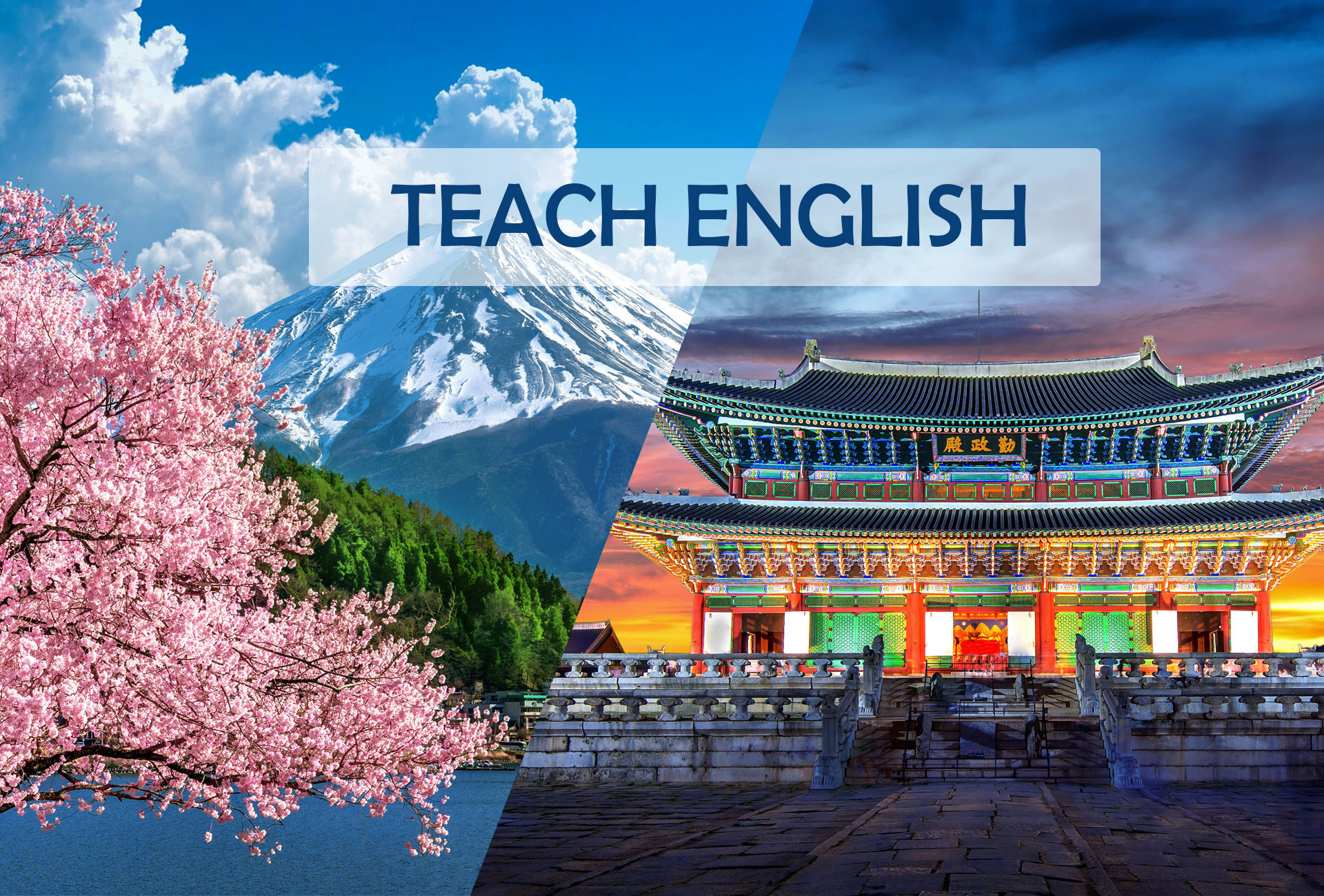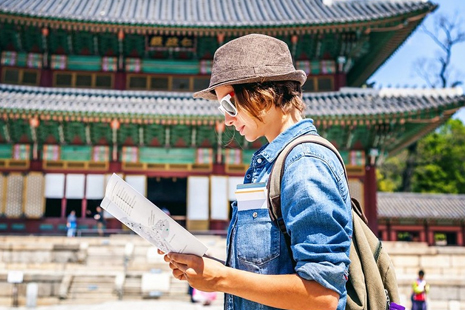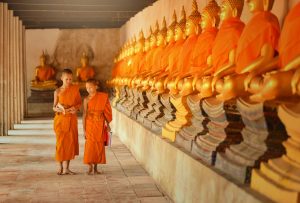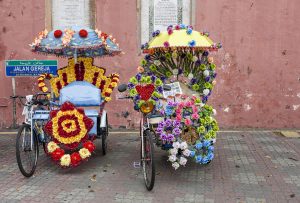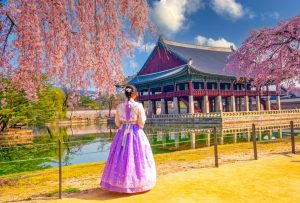In recent years, Australian teachers have been seeking exciting opportunities to teach English abroad, especially in Asia. The two Asian destinations that strongly seem to attract English teachers are Japan and South Korea.
Both these countries offer rich cultural experiences, unique teaching environments, and a rewarding professional career. However, deciding where to teach (Japan or South Korea) can be a bit overwhelming without understanding the differences between them.
In this article, we’ll guide you through several key aspects of teaching English in Japan and South Korea. By the end, we’ll help you choose the right destination by considering your career goals, lifestyle preferences, and personal interests.
Whether you’re drawn to Sushi and Temples in Japan, or K-pop and Street Food in South Korea, the right preparation, and understanding is essential – perhaps, that’s where a TEFL certification can set you apart.
So, are you ready to take your teaching journey overseas? Let’s get started and look at what it is like to teach English in these two incredible countries!
1. Eligibility and Hiring Requirements
Teaching overseas requires meeting certain criteria. Japan and South Korea have distinct hiring preferences and visa conditions, making it essential to understand these requirements before applying.
Basic Qualifications
- Japan:
To teach English in Japan, you’ll need a bachelor’s degree and should have a native-level English proficiency. Some schools may prefer previous teaching experience, but it’s not always a deal-breaker. - South Korea:
South Korea also requires a bachelor’s degree, but they are stricter when it comes to hiring native English speakers for visa eligibility. That means only citizens from countries like Australia, New Zealand, the USA, Canada, and the UK typically qualify.
TEFL Certification – Is It Essential?
Having a TEFL certification is highly recommended for both countries, and in many cases, it’s mandatory. Even when it’s not required, having TEFL credentials improves your chances of landing a better-paying job and ensures you’re well-prepared to teach effectively. If you are in Japan, and planning to take a TEFL Course – then TEFL International Tokyo is one of the top choices.
Age Limits and Preferences
- Japan:
There are no strict age limits, but younger teachers might find it slightly easier to secure positions, especially in public schools. - South Korea:
While South Korea doesn’t enforce a specific age limit, schools often prefer younger teachers (in their 20s or 30s) for certain roles, especially in private academies (hagwons).
Quick Reference Table for Eligibility and Hiring Requirements:
| Criteria | Japan | South Korea |
|---|---|---|
| Minimum Education | Bachelor’s degree (in any field) | Bachelor’s degree (in any field) |
| TEFL Certification | Highly recommended (sometimes mandatory) | Mandatory for most positions |
| Native Speaker Requirement | Preferred but not mandatory | Mandatory for visa eligibility |
| Work Visa Eligibility | Sponsored by schools; ALT or Eikaiwa visa | E-2 visa (requires native English speakers) |
| Age Preferences | No strict limits (younger teachers preferred) | No official limit (prefer teachers in 20s-30s) |
Understanding eligibility requirements helps you prepare for the teaching job search. Next, we’ll explore how salaries, benefits, and the cost of living compare between the two countries.
2. Salary, Benefits, and Cost of Living
Salary, benefits, and living expenses play a significant role when deciding where to teach. Let’s compare what Japan and South Korea offer in these crucial areas.
Salary Comparison
Japan:
- The average monthly salary for English teachers ranges between ¥250,000 to ¥300,000 (AUD 3,000-3,600).
- Teachers in large cities like Tokyo or Osaka may earn slightly more, but living expenses are higher too.
- Bonus structures are less common, but some positions may offer completion bonuses at the end of the contract.
South Korea:
- The typical salary ranges between ₩2.1 million to ₩2.7 million (AUD 2,500-3,300) per month.
- In addition to the salary, hagwons (private academies) and EPIK (public school program) sometimes offer performance-based bonuses or contract renewal incentives.
Housing and Accommodation
- Japan:
- Many teaching positions provide a housing allowance or help teachers find suitable accommodation, but free housing is rare.
- Teachers are usually responsible for paying a deposit (shikikin) and key money (reikin), which can be expensive.
- Rent varies greatly – expect ¥70,000 to ¥120,000 (AUD 750-1,200) per month in cities like Tokyo.
- South Korea:
- Free furnished accommodation is a major perk for most teaching positions, especially through EPIK and hagwons.
- Teachers only need to cover utilities, which typically amount to ₩100,000 to ₩200,000 (AUD 120–240) per month.
- Accommodation might not be luxurious but is functional and located close to the school or public transport.
Health Insurance and Pension Plans
- Japan:
- Teachers are enrolled in National Health Insurance, covering around 70% of medical costs.
- You may also be required to contribute to the pension system, which can be refunded if you leave Japan after completing your contract.
- South Korea:
- Teachers are covered by National Health Insurance and contribute to the National Pension Scheme.
- As an Australian citizen, you’re eligible to claim pension refunds upon leaving South Korea, which is a financial benefit many teachers appreciate.
Working Hours and Overtime Pay
- Japan:
- Teachers typically work 25-30 teaching hours per week, plus time for lesson preparation and meetings.
- Some jobs require working on Saturdays or evenings, especially in Eikaiwa (conversation schools).
- Overtime pay may be offered for additional classes, but the rates vary widely.
- South Korea:
- Public school teachers through EPIK work 22 hours per week, while those in Hagwons can expect 30–35 teaching hours.
- Overtime pay is usually guaranteed in hagwons, with a fixed hourly rate for extra lessons.
- Teaching schedules can vary – public school hours are 9 am to 5 pm, while hagwons often require evening classes.
Paid Holidays and Vacation Time
- Japan:
- Teachers in public schools enjoy 10–15 days of paid leave, with additional time off during school breaks.
- Eikaiwa teachers, however, have fewer holidays, with some contracts offering only 5–10 days of annual leave.
- South Korea:
- EPIK teachers receive 18 paid vacation days plus all public holidays (around 15 national holidays).
- Hagwon teachers get fewer holidays, typically 7–10 days of vacation, but they still enjoy public holidays off.
Cost of Living Comparison
- Japan:
- Living in cities like Tokyo or Osaka can be expensive. Monthly living costs, including rent, food, and transport, can reach ¥200,000 to ¥250,000 (AUD 2,100-3,000).
- Groceries are relatively pricey, with imported goods costing more. Dining out is common but can also add up.
- South Korea:
- The cost of living is generally lower than in Japan. Teachers can comfortably live on ₩1.5 million (AUD 1,800) a month, including rent and food.
- Eating out is affordable, with a meal at a local restaurant costing around ₩8,000–₩12,000 (AUD 10–15).
Savings Potential
- Japan:
- With higher salaries but also higher living costs, teachers can still save ¥70,000–¥100,000 (AUD 850–1,200) per month, depending on their lifestyle.
- South Korea:
- Thanks to free housing and a lower cost of living, teachers in South Korea have better savings potential, often saving ₩1 million or more (AUD 1,200) each month.
Quick Reference Table for Salary, Benefits, and Cost of Living:
| Salary Details | Japan | South Korea |
|---|---|---|
| Average Monthly Salary | ¥250,000–¥300,000 (AUD 3,000–3,600) | ₩2.1M–₩2.7M (AUD 2,500–3,300) |
| Bonus/Incentives | Less common, but completion bonuses available | Performance bonuses and contract renewal incentives |
| Teaching Hours per Week | 25–30 hours | 22 hours (EPIK); 30–35 hours (hagwons) |
| Overtime Pay | Varies by school, not always guaranteed | Guaranteed with fixed hourly rates |
| Paid Vacation Days | 10–15 days | 18 days (EPIK); 7–10 days (hagwons) |
| Cost of Living (Monthly) | ¥200,000–¥250,000 (AUD 2,100–3,000) | ₩1.5M (AUD 1,800) |
| Savings Potential (Monthly) | ¥70,000–¥100,000 (AUD 850–1,200) | ₩1M or more (AUD 1,200+) |
While both countries offer great benefits, South Korea’s free housing and lower costs increase savings potential. Now, let’s look at what teaching environments and job roles you can expect.
3. Teaching Environment and Job Roles
The type of school, class sizes, and work schedules shape your teaching experience. Let’s break down the roles and environments you’ll encounter in Japan and South Korea.
Types of Teaching Programs and Institutions
- Japan:
- JET Program: A government initiative placing teachers as ALTs (Assistant Language Teachers) in public schools across Japan.
- Eikaiwa Schools: Private conversation schools that offer English lessons to all age groups, including adults and business professionals.
- International Schools and Universities: Require more qualifications but offer higher salaries and better benefits.
- South Korea:
- EPIK Program: A government program placing teachers in public schools, usually elementary or middle schools.
- Hagwons (Private Academies): After-school programs that provide English lessons for children and teenagers.
- Universities: Less common but offer part-time teaching roles with higher salaries and longer vacations.
Class Sizes and Student Engagement
- Japan:
- Public school classes usually have 30–40 students, requiring more classroom management.
- In Eikaiwa schools, class sizes are smaller (around 5–15 students) and more conversational.
- Students tend to be more reserved, so patience and encouragement are key to improving participation.
- South Korea:
- Public school classes also have 30–35 students, but there’s generally a focus on group work and collaborative activities.
- In Hagwons, class sizes are smaller, typically 8–12 students.
- South Korean students are often highly motivated but under pressure due to competitive academics, leading to a fast-paced teaching environment.
Work-Life Balance and Work Culture
- Japan:
- Public school teachers (ALTs) have a fairly structured 8 am–4 pm schedule, though additional hours may be required for school events.
- Eikaiwa teachers often work afternoons and evenings, with shifts extending until 9 pm. Weekend shifts are also common.
- Japanese work culture values punctuality and formality, so teachers need to adapt to these expectations.
- South Korea:
- EPIK teachers have set hours from 9 am to 5 pm, with lighter workloads compared to private academies.
- Hagwon teachers often work from 2 pm to 10 pm, including Saturdays.
- South Korean work culture can be demanding, with high expectations, though many schools foster supportive environments.
Lesson Planning and Curriculum
- Japan:
- In public schools, teachers often work as ALTs alongside Japanese teachers, focusing on conversation and listening skills.
- Eikaiwa teachers have more independence but are required to follow specific conversation-based curricula.
- Lesson plans in international schools and universities require a more structured, academic approach.
- South Korea:
- EPIK teachers follow a national curriculum but have room for creative lesson planning.
- Hagwon teachers often teach from prescribed textbooks, leaving less room for flexibility in lesson design.
- University teaching jobs involve independent lesson planning and may require developing new teaching materials.
Support and Development Opportunities
- Japan:
- The JET Program provides orientation sessions and offers ongoing support through conferences and workshops.
- Teachers in private schools and Eikaiwa can access on-the-job training, though the support varies by institution.
- South Korea:
- EPIK offers structured orientation programs to help teachers settle in and adapt to South Korean culture.
- Hagwons may provide limited training, but many teachers rely on peer support networks and online resources for development.
Understanding the teaching environment will help you further decide on taking up teaching roles in Japan or Korea. Next, we’ll explore the cultural and lifestyle differences, which are just as important as job roles.
4. Cultural Adaptation and Lifestyle
Living abroad is more than just work. Adapting to cultural norms, building a social life, and enjoying leisure activities are essential parts of the experience in Japan and South Korea.
Cultural Differences and Social Norms
- Japan:
- Known for its politeness, discipline, and respect for hierarchy. Expect formal greetings and the use of honorific language.
- Social interactions can feel reserved initially, but once relationships are built, locals are warm and welcoming.
- Teachers should observe customs like bowing, removing shoes indoors, and following rules strictly (even for things like queuing).
- South Korea:
- South Korea is more socially dynamic and outgoing, with a fast-paced lifestyle.
- Hierarchy is also respected, but younger Koreans tend to be more relaxed compared to the older generation.
- Teachers are expected to be polite and respectful, with particular attention to addressing elders appropriately.
Language Barriers and Learning the Local Language
- Japan:
- English is not widely spoken, so learning basic Japanese can make everyday tasks easier, like shopping or navigating public transport.
- Japanese language lessons are widely available and often encouraged by schools.
- South Korea:
- Although English is more commonly understood, basic Korean helps immensely with communication.
- Teachers may encounter hangul (Korean alphabet) in daily life, and learning it makes the transition smoother.
Social Life and Expat Communities
- Japan:
- Large expat communities can be found in Tokyo, Osaka, and Kyoto, with regular meet-ups and events.
- The social scene is more laid-back, with an emphasis on cultural experiences such as visiting temples, tea ceremonies, and local festivals.
- Nightlife exists but tends to be quieter than in South Korea.
- South Korea:
- Cities like Seoul, Busan, and Daegu have vibrant expat communities with a mix of locals and foreigners attending events.
- South Korea is known for its active nightlife, including karaoke bars (noraebang), night markets, and street food.
- Social life revolves around food, music, and group activities like hiking or visiting themed cafes.
Public Holidays and Celebrations
- Japan:
- Key holidays include Golden Week, New Year, and Obon, with most businesses closing during these times.
- Teachers may also enjoy participating in traditional festivals like cherry blossom viewing (hanami) and autumn festivals.
- South Korea:
- South Koreans celebrate Lunar New Year (Seollal) and Chuseok (Harvest Festival), which are the biggest holidays.
- Public holidays often involve family gatherings, and teachers are sometimes invited to join local families for celebrations.
Travel Opportunities and Natural Attractions
- Japan:
- Known for its diverse geography, from ski resorts in Hokkaido to tropical beaches in Okinawa.
- Domestic travel is easy with the efficient Shinkansen (bullet train) network.
- South Korea:
- Offers beaches, mountains, and national parks perfect for weekend getaways.
- Jeju Island is a popular destination, and public transport is efficient and affordable.
Adapting to Daily Life
- Japan:
- Expect a high standard of living but with strict rules on waste disposal, punctuality, and personal behavior.
- Convenience stores (konbini) offer ready-to-eat meals and essentials, making life easier for foreigners.
- South Korea:
- Daily life is fast-paced, with a focus on technology and convenience.
- Mobile apps are used for almost everything, from ordering food to paying bills.
- Koreans love group activities, so teachers may find themselves invited to dinners, hikes, or outings regularly.
Cultural Adaptation and Lifestyle: Quick Reference Table
| Details | Japan | South Korea |
|---|---|---|
| Cultural Norms and Social Interaction | Formal, reserved, with strict customs like bowing | More dynamic; respectful to elders, but younger generation more relaxed |
| Language Barriers | Limited English; learning basic Japanese helps | More English speakers, but basic Korean helps |
| Expat Communities and Social Life | Active expat meet-ups in Tokyo, Osaka; cultural experiences like tea ceremonies | Vibrant social scene; active nightlife and themed cafes in Seoul, Busan |
| Public Holidays and Celebrations | Golden Week, New Year, and Obon | Lunar New Year (Seollal) and Chuseok (Harvest Festival) |
| Travel Opportunities | Diverse geography; travel via Shinkansen (bullet train) | Mountains, beaches, and Jeju Island; affordable public transport |
| Daily Life and Convenience | Convenience stores (konbini) make life easier; strict waste management rules | Technology-driven; mobile apps widely used for daily tasks |
Whether you prefer Japan’s serenity or South Korea’s energy, each country offers a unique lifestyle. Now, let’s explore the visa processes and work permits required to move there.
5. Visa Process and Work Permit
Navigating visa requirements is a critical step in planning your teaching adventure. Here’s a breakdown of the process, timelines, and family visa options for both countries.
Work Visa Eligibility and Requirements
- Japan:
- Schools typically sponsor teachers for a Work Visa (Instructor or Specialist in Humanities visa).
- Documents required include a degree certificate, passport, and job contract.
- Background checks may not always be required but are becoming more common.
- South Korea:
- The most common visa for English teachers is the E-2 visa, which requires teachers to be from native English-speaking countries.
- Documents needed include a degree certificate, passport, criminal background check, and health exam.
- Teachers are usually placed in either hagwons or public schools (EPIK) based on their visa status.
Visa Processing Time and Fees
- Japan:
- Processing time can range from 4 to 8 weeks.
- Some schools reimburse visa-related expenses after the teacher arrives.
- Renewals are relatively easy if the teacher maintains employment.
- South Korea:
- The E-2 visa takes 2 to 4 weeks to process, but health and background checks may take additional time.
- Visa fees are usually covered by the employer.
- Renewal and extension of the visa is straightforward if the teacher continues to work.
Family Visa and Dependent Options
- Japan:
- Teachers can apply for a Dependent Visa for their spouse or children, allowing them to stay legally in Japan.
- However, spouses on Dependent Visas cannot work unless they apply for additional work permits.
- South Korea:
- Teachers can also bring family members on a Dependent Visa.
- Spouses may work part-time if they secure the appropriate work permit.
Permanent Residency and Long-term Stay
- Japan:
- Teachers who have worked in Japan for several years can apply for Permanent Residency, but the process can be lengthy.
- Long-term teachers can also switch to a different visa category, such as a Skilled Worker visa.
- South Korea:
- Permanent Residency (F-5 visa) is available but typically requires a long stay and significant contribution to society.
- Some teachers opt for F-series visas, which allow more flexibility in employment.
Visa Process and Work Permit: Quick Reference Table
| Visa Details | Japan | South Korea |
|---|---|---|
| Common Visa Type | Instructor or Specialist in Humanities visa | E-2 visa |
| Work Visa Sponsorship | Sponsored by schools | Sponsored by employers (public or private) |
| Processing Time | 4 to 8 weeks | 2 to 4 weeks |
| Required Documents | Degree certificate, passport, job contract | Degree certificate, passport, background check, health exam |
| Visa Fees | Some schools reimburse expenses | Usually covered by employer |
| Dependent Visa Options | Yes, but spouse cannot work without a permit | Yes, with part-time work possible for spouse |
| Permanent Residency Pathway | Available after several years of work | Available but requires long-term stay |
With the right preparation, securing a work visa becomes straightforward. Let’s now examine the challenges and opportunities that come with teaching in Japan or South Korea.
6. Challenges and Opportunities
Every journey has its ups and downs. Let’s explore the common challenges and growth opportunities that teachers experience while living and working in Japan or South Korea.
Common Challenges
- Japan:
- Language barrier: Japanese is not widely spoken, and signage in English can be limited.
- Cultural adjustment: Adapting to a formal and structured environment can take time.
- Cost of living: High expenses, especially in big cities like Tokyo, can make budgeting a challenge.
- South Korea:
- Fast-paced work environment: Hagwon schedules can be demanding, with evening and weekend classes.
- Academic pressure: Students are under high pressure to perform, which can impact the teaching atmosphere.
- Air quality issues: South Korea experiences seasonal pollution, especially from yellow dust in spring.
Growth and Development Opportunities
- Japan:
- Teachers have the opportunity to learn Japanese and immerse themselves in the culture through festivals and local events.
- JET alumni networks offer lifelong professional connections.
- Teachers can advance to international schools or university positions with experience.
- South Korea:
- EPIK teachers have access to structured professional development and can participate in conferences.
- Teachers can transition to higher-paying university jobs or curriculum design roles.
- Korean language skills are in demand and can open doors to new opportunities.
Long-Term Career Prospects
- Japan:
- Many teachers use their experience in Japan as a springboard to careers in education management or international schools.
- Teachers can also switch industries by using their Japanese language skills in other fields like tourism or business.
- South Korea:
- Long-term teachers can apply for F-series visas, giving them more flexibility in employment.
- The experience in South Korea is highly regarded, especially for those pursuing careers in TESOL or education consulting.
Personal Growth and Fulfillment
- Japan:
- Living in Japan offers the chance to explore rich traditions, serene landscapes, and a deep sense of history.
- Teachers often report a strong sense of personal accomplishment from overcoming challenges.
- South Korea:
- South Korea’s vibrant and fast-paced lifestyle offers adventure, cultural immersion, and personal growth.
- Teachers enjoy building strong connections with students and fellow teachers.
Both countries offer enriching experiences despite the challenges. With these insights, let’s dive into our final thoughts to help you choose which destination fits your goals.
Which One is Right for You? – Final Thoughts
Deciding between Japan and South Korea comes down to what you value most in your teaching and life experience abroad. Both countries offer incredible opportunities, but each has its own distinct vibe, challenges, and rewards.
When Japan Might Be the Right Choice
- If you’re drawn to a more structured work environment and appreciate traditions, Japan’s work culture might suit you.
- The JET Program offers solid support, and the chance to work in public schools is ideal if you prefer a calmer teaching atmosphere.
- Japan is perfect for those who love exploring nature and history – from cherry blossoms in the spring to ancient temples and castles.
- If you don’t mind a higher cost of living and are excited to learn Japanese, this could be the adventure you’re looking for.
If you’re seriously considering Japan, you might also want to check out this in-depth guide on what it is really like to teach English in Japan today – from visas to salaries to cultural curveballs.
When South Korea Might Be a Better Fit
- South Korea is a great choice if you’re comfortable with a fast-paced, dynamic work environment.
- The financial perks like free housing, lower living costs, and savings potential make it an attractive option.
- If you enjoy vibrant social life and love being part of a bustling city atmosphere, cities like Seoul or Busan will not disappoint.
- South Korea offers plenty of growth opportunities, including higher education roles and long-term visa options, if you see yourself staying abroad for several years.
If you are considering teaching English in South Korea, we’ve put together a detailed guide that covers everything – from visas and salaries to job hunting and what daily life actually feels like.
No Wrong Choice – Just What Fits You Best
At the end of the day, both Japan and South Korea provide rewarding experiences for English teachers, and there is no “wrong” choice. Each country has its own unique charms and challenges, and the decision ultimately depends on your goals, lifestyle preferences, and career aspirations.
With the right preparation, qualifications, including your TEFL certification, you’ll be ready to take on either adventure. Whichever country you choose, you’re in for an unforgettable experience that will enrich both your professional and personal life.
